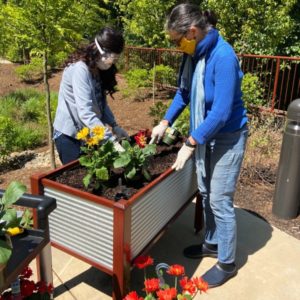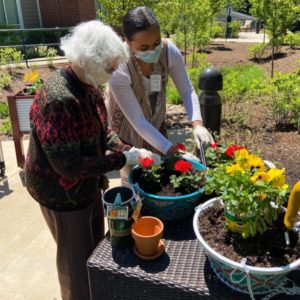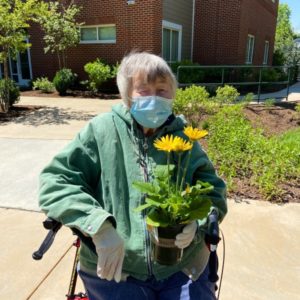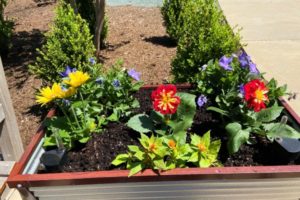Gardening is an excellent way to stay active and interact with nature. And who says you must have a backyard to do it!
Container Gardening Basics
What is container gardening?
Container gardening is simply the practice of growing plants in containers—pots, baskets, or bowls. It presents a great opportunity to recycle those items that may have long since fulfilled their purpose, such as milk cartons, colanders, or birdhouses. Even an old gardening boot might be put to good use in this way.
Above all, it is a perfect solution for those with little-to-no garden space. Container plants can thrive on a balcony, small patio, or apartment windowsill, provided they receive the right amount of sun and water.
All kinds of plants can be grown in containers—vegetables, herbs, annuals, perennials, and even small shrubs. Options abound for any budget, time schedule, or available space, and you do not need a green thumb to get started. The idea is simple: fit the plant’s requirements to the container and the container to the space available.
Overall, container gardening adds some green to your space and lets you engage in a meaningful hobby. Helping something flourish and grow is a joy at any age.
What plants should I choose?
Select native plants that are easy to care for over exotic plants. Plan your purchase to prevent being overwhelmed—so-called “plant panic”. The best vegetables for container gardening include tomatoes, peas, salad greens, and herbs. Favored annuals include geraniums, fuchsia, marigolds, and wax begonias. For perennials and shrubs, consider daylilies, ferns, hostas, and sedges.
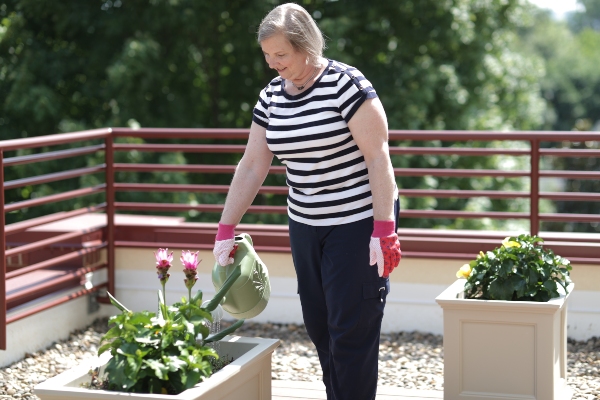
Benefits of Container Gardening for Seniors
Gardening provides a multitude of benefits. It is a form of self-care and psychic renewal. Plants refresh the air we breathe. Their beauty draws the eye. When it is not possible to spend time outdoors, indoor plants connect us to nature and mark the seasons. All they ask is to be fed, watered, and admired.
Enjoy easy access and low maintenance
Container gardening is accessible to everyone, including those with limited mobility or using a wheelchair. Containers can rest at waist, chest, or eye level. Sticking to plants in small pots or baskets eliminates the need to handle heavy soil mixes or watering cans.
Make it easy on yourself. Plan the placement of your container before you add soil and plant material. The container will become much heavier once filled.
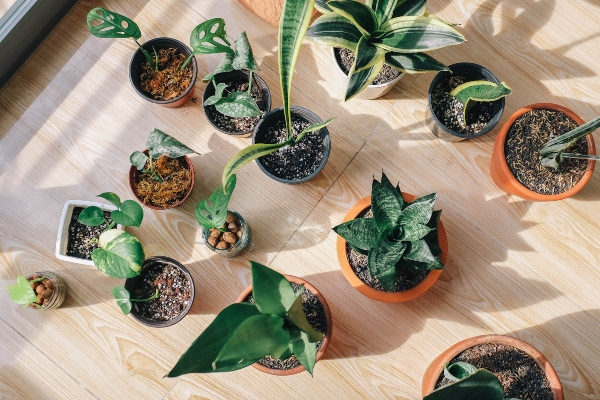
For indoor container gardens, choose less demanding plants at first. For example, you can try Tillandasia (an air plant about the size of a hand palm). It only needs to be dunked in water every so often. Snake plants can go weeks at a time without water. And succulents defy all odds. Choose plants that allow you to water and nurture at your own pace and let nature do the rest.
Outdoors, containers make it possible to bypass many of the hassles of in-ground gardening. By placing containers strategically, you can avoid harsh sunlight and heat. Forget about hours spent weeding. Weeds will crop up—they are nature’s ultimate opportunists. But, with such a small surface area, they are hardly a concern. You can jumpstart seed-starting by covering the container during cooler nights. Even better, there is no need for heavy garden tools and equipment: kitchen cutlery works just fine.
Stay active
Container gardening is just the ticket for getting light exercise and staying active, improving heart health, and reducing the risk of stroke. It curtails stress by raising levels of cortisol and lowering blood pressure. Lesser-used muscles and hand-eye coordination also get a boost through the wide range of motion gardening requires.
AARP notes that, while gardening is indeed exercise, “you might become so engrossed in your work that you don’t even realize you’re breaking a sweat.”
Improve mental health
Many who garden report that it fosters a sense of calm and well-being. Gardening can even act as a sort of therapy for anger or pent-up frustration. The physicality of pruning and planting helps release negative emotions. Moreover, guiding plant growth to blossoming beauty soothes the spirit.
Container gardening helps keep the mind engaged and healthy with positive habits and responsibility. Research suggests that it also eases symptoms of Alzheimer’s and dementia. The color and fragrance of plants brighten up living areas, further improving mood.
The impetus to live in the moment is another healthy byproduct of gardening. Watching something grow and blossom before your eyes is a wonderful way to stay connected to nature and savor the passage of time. Some report that gardening even takes them into ‘the zone,’ a state of altered consciousness also experienced through artistic expression, athletic performance, and mindful meditation.
All in all, being in green spaces simply provides cognitive rest that helps reduce stress. And successfully tending to plants instills a sense of accomplishment and pride.
Tips for Successful Container Gardening
Choose a large container with drainage
A good garden starts with good containers! When considering a plant’s space needs, size up your choice of container. Larger containers stay moist longer and are more resistant to temperature changes. Ensure your containers offer sufficient drainage.
Instead of standard garden soil or bagged topsoil, select a potting soil mix. The latter will retain moisture and reduce compaction. Mix in an organic fertilizer to boost nutrient levels. Prevent a mess by setting up a pan or tray to catch runoff.
Provide just the right amount of water and sunlight
Of course, plants need soil, water, and sunlight to thrive. But how much, and how often? Requirements will vary by plant, but these general rules can serve as a gauge.
Water plants thoroughly and monitor drainage levels. Check the soil moisture at least once a week. Signs of underwatering include leaves with brown edges, with the lower leaves suffering first. A bad odor, a mushy base around the stem, and soft or rotten leaves are signs of overwatering.
People tend to underestimate just how much light their plants need. Many plants prefer direct sunlight. Placing indoor plants near a window is best, but sometimes additional lighting may be required. A plant may need more light if its leaves are turning lighter in color, growing in further intervals apart on the stem, or leaning heavily to one side.
Connecting with Nature at Branchlands
At Branchlands Senior Living Community, opportunities to connect with nature are woven into daily life. Residents enjoy tending their plants along windowsills and in courtyards and terraces. Our activities calendar includes many ways to enjoy the great outdoors. For those interested in picking up new plants and garden supplies for their container gardening projects, the Linden House concierge shuttle service can take you right to local garden centers.
Check out gardening opportunities at Branchlands by scheduling a visit or taking a virtual tour of our independent living and assisted living communities.

